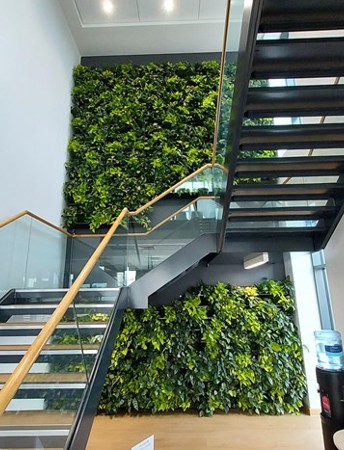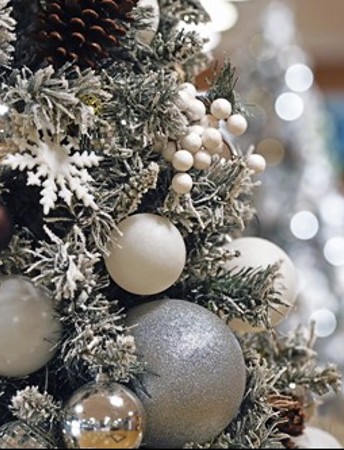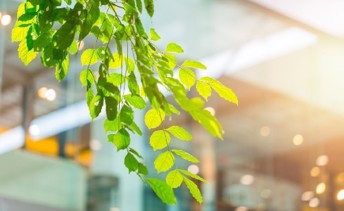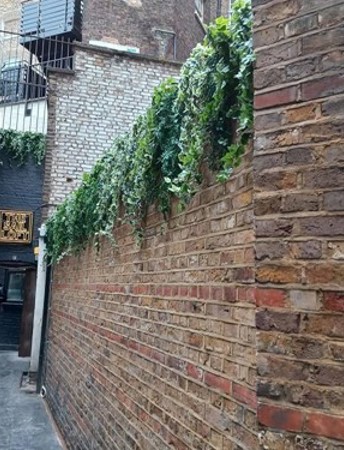An outdoor plant wall, or living wall, can make a stunning addition to your premises.
Not only do they look beautiful but, by incorporating biophilic design into your organisation, they’re purported to have a range of other benefits from boosting productivity and well-being to creating good first impressions and enhancing your brand’s identity. They also help to protect your buildings from noise pollution and the effects of harsh weather. And research suggests that they can also lead to customers spending more time in a destination and even spending more money once there.
But how much maintenance do outdoor living walls need and just what do you need to do to make sure they keep on looking good? We spoke to our living wall experts at phs Greenleaf to put together the following tips on how to care for your outdoor plant wall.
Water requirements
As with all plants, outdoor living walls need water to survive. However, as they are vertical and contain little or no soil, watering can be a little bit trickier. Plus, in warm weather, they can dry out rapidly so their watering needs will become much more intensive.
You can water your living wall by hand, but you may need to do this two or three times a day. Alternatively, an irrigation system is much more effective as well as saving a lot of resources. An irrigation system built into the living wall will automatically water your plants regularly. However, it isn’t a case of switching this on and washing your hands of it. Irrigation systems will need to be tweaked depending on the season but also the weather experienced throughout the year. The water requirements will need to be checked regularly to ensure the needs of the plants are being met.
The risk of overwatering
Overwatering can cause roots to rot and your plants to die. One of the first signs a plant has been overwatered is wilting or drooping. However, these are also signs of underwatering so you could be tricked into providing more water which will lead to the fast demise of your plants. The best method is to regularly check and monitor how wet any soil or plant membrane is. If it’s getting waterlogged, immediately adjust the amount of water your plants are getting and allow them to dry out. A fan can help speed up the drying-out process.
If you notice that the plants at the bottom of your living wall are wilting or drooping, it could be a drainage issue in that too much water is running down the wall and soaking these plants. Adjust accordingly and always make sure the plants at the bottom of your living wall are ones that benefit from a lot of water.
Regular pruning
Check your living wall regularly for wilting and any brown leaves. Prune away any brown leaves and remove the worst of the wilting leaves as this stops the plant from expending its energy on dead leaves and focusing on thriving.
Remove any dead plants and replace them. If a particular type of plant is performing badly, consider replacing it with one which is doing well. Remember that different plants favour different conditions so it may take you a while to fine-tune your wall’s content and get the right plants for your location.
In Spring, you’re likely to need to add new some plants to replace any that haven’t fared well during the Winter. It’s unlikely – but not impossible – that weeds can infiltrate your living wall so keep an eye out for these and remove at the first opportunity.
If you start to notice your leaves have brown tips, check the plant’s moisture content as mentioned above as this may be a sign of under or overwatering.
If your living wall features any fruit, vegetables or herbs, harvest these when they are ripe – otherwise, they risk becoming rotten and looking unattractive. Not only could you use this produce if your premises cook on site, but you could also offer this to staff or set up an initiative to provide free produce to the community.
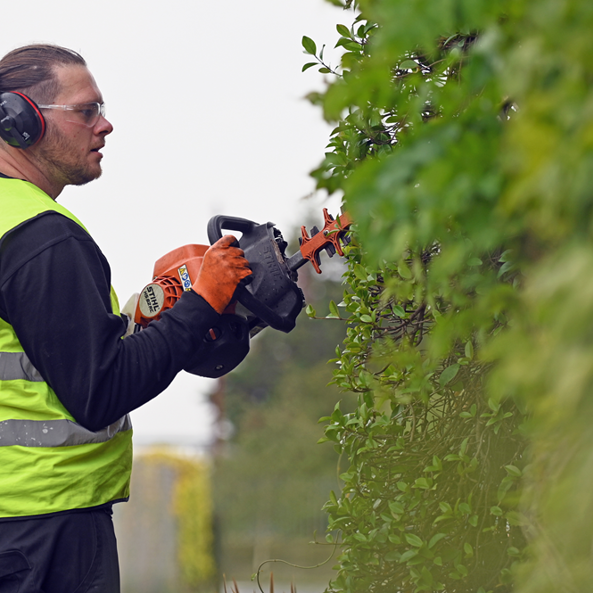
Fertilise
Plants take in nutrients from the soil they are planted in but, due to their limited soil content, this is restricted when it comes to living walls. Therefore, fertilising an outdoor plant wall is essential through the Spring and Summer months. You can either add this by hand – spraying plants, using a watering can or by drip injectors. Alternatively, fertiliser can be added to your irrigation system so it mixes with the water and is delivered automatically.
Surviving the winter
When planning out your living wall outdoors, you’ll want to ensure it can stand up to the British weather. Therefore, while summer blooms will look glorious, incorporate them with more hardy plants which can tolerate the colder winter weather. This includes perennials, conifers, ivy and grasses. If you know there’s a heavy freeze expected, cover the living wall to protect it if you can. Planting a living wall on a property, may give it some extra warmth than on an exterior wall. But you may have to accept that some plants may not survive a hard winter so plan to replace with some new additions come Spring.
Ask a professional
If you want all the benefits and beauty of a living wall but don’t have the resource to give it all the care it needs, get help. phs Greenleaf not only installs quality interior and exterior living walls, but we will also maintain them for you too. We take care of all your living wall maintenance from irrigation, fertilisation, pruning and replanting to managing any pests or diseases which may inflict your plants. This keeps your living wall looking good day after day. And as we’re nationwide with a team of expert landscapers and horticulturists, no matter where you are, we’re on your doorstep.
Find out more today, by visiting our living wall pages.




























